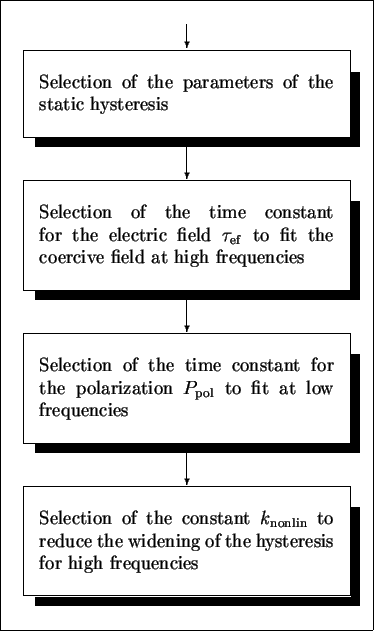 |
The fact that ferroelectric hysteresis is definitely nonlinear makes the extraction of the material parameters rather difficult, as the transient terms are very sensitive since they depend on the derivatives of the hysteresis. Furthermore, useful data are not easy to obtain, since high frequency measurements on ferroelectrics are still extremely unreliable. In addition the presented model is new and no prior knowledge on the parameter values can be used.
As a first step in order to extract these material parameters, an applicable algorithm which adapts the simulated data to the measured data had to be developed. Fig. 5.4 outlines the most promising out of various tested algorithms.
With this algorithm the parameters used for the simulations in the previous Section were extracted. The fact that similar values of the parameters are obtained for both materials is a good indicator for the reliability of the transient model. The parameter set obtained for sample two was used for all subsequent calculations.